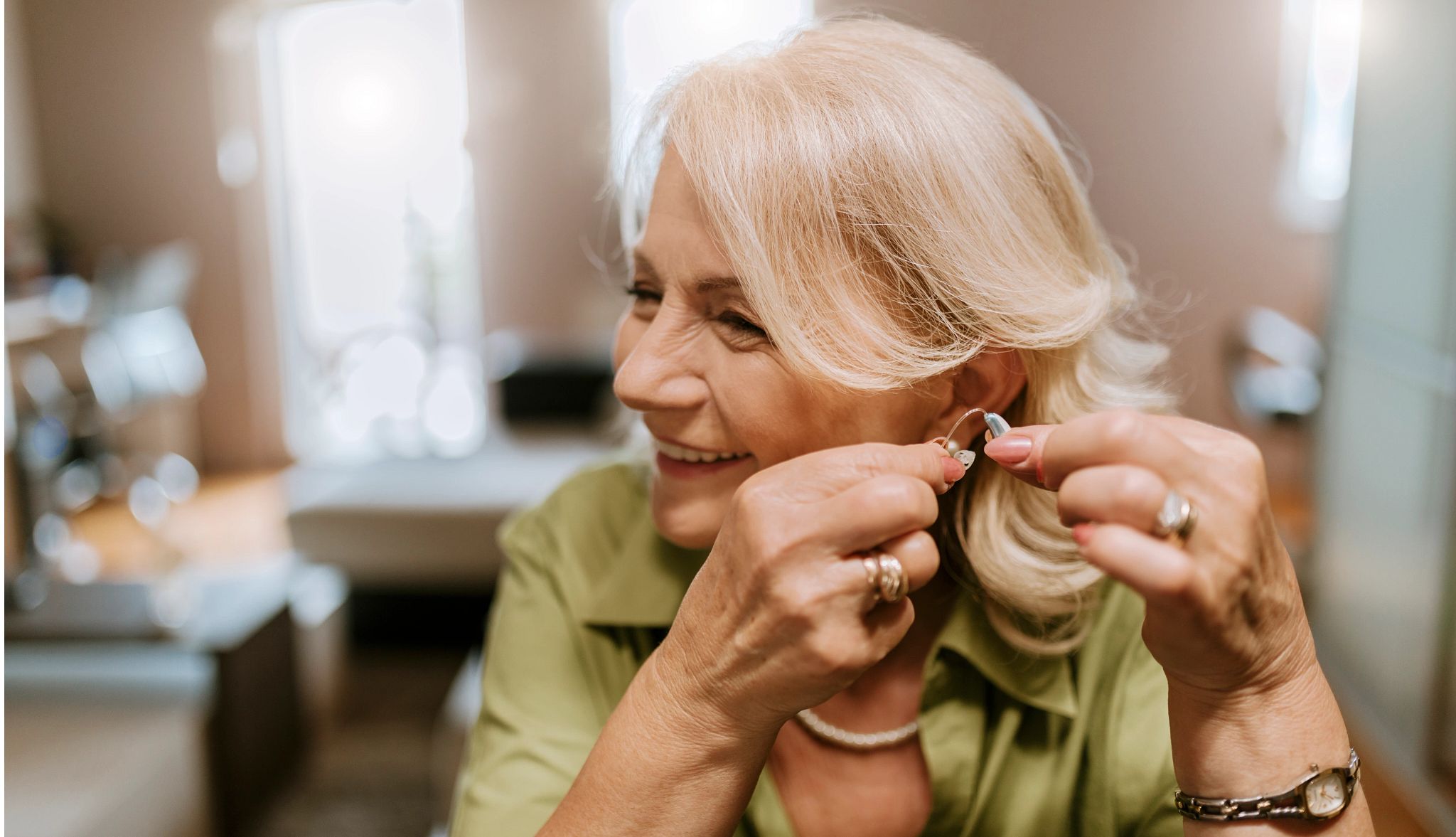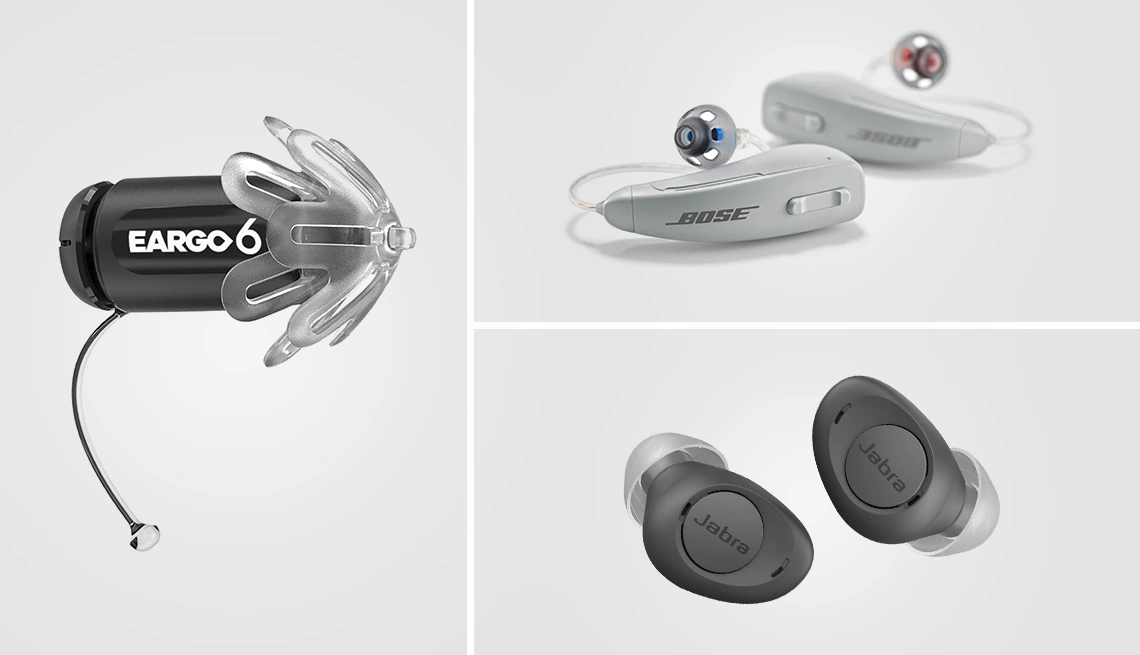
Wait, Did Hearing Aids Just Get… Fun?
Let’s be real. Shopping for hearing aids has always felt a bit like picking socks in a blackout, right? You sort of guess, you hope you get two of the same, and then you spend the next month wishing you’d picked something comfier.
Well, here’s some good news: the chaos—at least a little of it—finally feels like it’s lifting. Why? Because some recent hearing aid reviews from AARP and a landslide of new over-the-counter (OTC) options have changed the whole game. We’re not talking about your granddad’s squeaky beige ear-twigs anymore. We’re talking slick, smart, everyday-friendly gear… and yes, even AirPods are in the mix now. No, seriously.
Pull up a chair, grab your coffee, and let’s dig through what’s actually out there. This isn’t just about hearing better—it’s about living better. Ready?
Online or Audiologist? The OTC Storm
Can You Really Skip the Pro?
So… OTC hearing aids. You’ve probably seen them at drugstores, on late night TV, or even on your favorite tech sites. The burning question: Are these self-fit gadgets just as good as those tailored by audiologists?
The short answer? For folks with mild to moderate hearing loss, sometimes, yes! According to recent AARP coverage, people who tried self-fit OTC hearing aids had pretty much the same results—after about six weeks—as their buddies with pro-fitted ones. That means less fuss, less money, and frankly, less awkward small talk with someone in a white coat if you’re not into that sort of thing research on AARP.
But There’s a Twist…
Remember that old infomercial voice: “But wait, there’s more!” Well, there is. AARP and others warn that OTCs can be confusing. One second you’re giddy seeing a $49 sticker, next thing you’re lost in a sea of app settings, return policies, and some bored cashier who can’t even pronounce “audiogram.”
It’s not just hype: lots of folks still prefer seeing a specialist first. 84% of older adults in a Northwestern University study said they’d rather buy their hearing aids from a pro than off-the-shelf in AARP bulletin breakdowns. Makes sense, right? Sometimes we just want that extra peace of mind—especially with something as life-changing as hearing.
OTC vs. Prescription Hearing Aids—Which Is Which?
It’s More Than Just the Price Tag
Here. Let’s get nerdy for a second—without the jargon overload. It’s like comparing DIY meal kits to a restaurant dinner: both fill you up, but they’re definitely not the same experience. Want proof?
| Feature | OTC Hearing Aids | Prescription Hearing Aids |
|---|---|---|
| Price | $200–$1,600 (self-fit via app) | $2,000–$8,000 (fitted by a pro) |
| Who It’s For | Mild to moderate loss | More severe/complex loss |
| Support | Limited—mostly apps/self-research | Lots—fittings, custom programming, advice |
| Return Policies | Varies (make sure to check!) | Usually longer, and sometimes trial devices |
Still curious how prices compare across types and brands? Check out AARP hearing aid prices for the full scoop on what you’ll actually pay.
My Two Cents: Messy, But Worth It
I’m not kidding—my friend Larry bought a $220 OTC set online last year. The first week he was all-in—”I can finally hear my granddaughter’s school concerts!” The second week, though… not so much. The background noise on the school bus? Not so magical. Larry ended up seeing a local audiologist after a month for tweaks. Sometimes you need both: the wild freedom of OTC with a little pro polish sprinkled in.
Earbuds as Hearing Aids? Yes, That’s a Thing
Apple AirPods Pro 2: Hype or Real Help?
Picture this: you walk the dog, listen to your playlist, then… slide straight into “hearing aid mode” on your AirPods. Is it really that easy?
Surprisingly, kind of! Apple’s AirPods Pro 2 now have FDA-approved features that can boost everyday sounds for folks with mild to moderate loss. Take a hearing test in the iPhone app, let the AirPods auto-tune themselves for your hearing profile, and just… go for a walk. It sounds wild, right?
AARP users testing them found them slick and handy—especially for $249 a pair instead of thousands. But there’s a “but.” Independent testing shows they just don’t amplify sound as much as traditional hearing aids, especially on certain speech frequencies. In noisy places, understanding conversation can be tough.
Personal Peek: Aunt Sue and the Backyard BBQ
Here’s where it gets human… Aunt Sue (yes, she exists) tried these fancy AirPods at a noisy family barbecue last summer. At first, she loved just hearing everything. But cranky lawnmower next door? Chatter from all sides? She missed her old behind-the-ear device’s noise filtering. Still, for walks and phone calls? She’s never looked back. Just shows—one size never fits all.
If you’re curious about the absolute latest in recommended models AARP loves, they’ve got a full rundown at Hearing aids recommended by AARP. Makes comparison-shopping feel a lot less overwhelming.
Non-Traditional and Sneaky Alternatives
The Rise of “Disguised” Hearing Devices
Let’s face it… not everyone loves the look or feel of classic hearing aids. The good news? New “hidden helpers” are everywhere.
One favorite spotted in the wild: Nuance Audio’s hearing aid glasses. They look just like your usual specs but are packed with microphones and mini speakers. It’s like “Clark Kent but for your ears.” Perfect for people who want to blend in… or just hate fiddling with tiny earpieces. Though, as per AARP’s rundown, you definitely pay a premium (about $1200+) and spend a bit of time customizing using a companion app.
Other gadgets include PSAPs (personal sound amplifiers), smart hearing apps, and, of course, those wireless earbuds. Is there a perfect solution? Probably not… but hey, at least you don’t have to stick to the obvious anymore!
True Tale: Feeling Good at the Theater
I’ll never forget my buddy Artie raving after he wore his new hearing glasses for the first time at a Broadway show: “I felt normal for the first time in years!” The applause, the actors’ voices—all sharp, nothing whistling or squeaking. That’s the magic we’re all after, right?
So… What Should You Actually Buy?
Let’s Talk Favorites—Kinda Like a Group Chat
The internet is flooded with hearing aid reviews, and AARP isn’t shy about picking favorites—or calling out flops. You want a quick hit-list? I got you. Based on AARP guides and the latest word from Consumer Reports and the National Council on Aging, here’s where things stand:
| Brand | Type | Review Highlights | Price Range |
|---|---|---|---|
| Jabra Enhance | OTC | Sleek, easy app fit, good sound, high expert ratings | $800–$1,600 |
| Phonak | Prescription | Best for noise, tons of pro support | $3,000+ |
| ELEHEAR | OTC | Tinnitus relief, user-friendly app | $400–$999 |
| Eargo | OTC | Discreet, easy for beginners | $1,500–$2,500 |
| AirPods Pro 2 | OTC Earbuds | Great for tech-lovers, best for mild loss | $249 |
But don’t just chase the cheapest or trendiest. Dig into user stories, expert takes, and what fits your actual ears and lifestyle. AARP’s guides are an awesome place to start. If cost is top of mind (and honestly, whose isn’t?), compare what’s out there at AARP hearing aid prices before you buy.
Watch Out: Not All “Deals” Are Good
One quick tip from a place of experience: Watch return windows like a hawk. Sometimes the fanciest feature-packed device is just… wrong for you. (Who remembers the great “ear canal irritation” saga of my 2022 winter? We do not speak of it.) Always pick a seller who lets you test without risk—or at least exchange for a better fit.
From Confusion to Clarity: Your Next Steps
How to Find Your Best Fit… Without Losing Your Mind
Ready to give your hearing a real shot? Here’s what’s worked for me and lots of other folks who’ve waded through this:
- Start with a self-check: Try a hearing screening app or the self-test built into AirPods if you’re in the Apple camp. Good for early detection and to see where you really stand Apple Tips.
- Think about your life: Crowded restaurants? Family calls? Watching TV at weird hours? Make a wish-list.
- Trial periods are key. Don’t fall for “final sale” hype—AARP and all the experts agree: Return windows save you (and your wallet) from regret down the line. Comparison-shopping is your best friend—see the rundown on Hearing aids recommended by AARP for what experts and regular users actually love.
- Don’t forget support: Quick tip from almost everyone I know—good support trumps extra features every time. Having a real person (even a chat rep!) to guide you is gold.
Be Honest, Try Things, Be Kind to Yourself
Seriously, there’s zero shame in trying two or three devices before you land on “the one.” And sometimes, what works best isn’t what seemed cool in a commercial. Go slow. Ask questions. If you get stuck, check back to resources like AARP hearing aid prices and the rest of AARP’s archives so you know you’re making a smart call with your cash… and your ears.
Let’s Wrap: Hear More, Stress Less
Who knew reading Hearing aid reviews AARP could feel like browsing for new sneakers? All that really matters is getting something that fits your real life—so you hear your favorites: laughter, music, city sounds, or even your pet’s little snores. OTC devices and clever alternatives are more available, affordable, and, honestly, less embarrassing than ever. If you’re on the fence, try a few, return what doesn’t work, and don’t be shy about asking for help along the way.
Trust yourself… but also trust a few reviews, too. Dive into detailed guides, like Hearing aids recommended by AARP, and keep tabs on up-to-the-minute AARP hearing aid prices so you never overspend. You deserve to catch every joke, every sweet moment, every punchline—no more hearing “what?” on repeat. This journey might be messy, but hearing well? It’s worth every step.


















Leave a Reply
You must be logged in to post a comment.